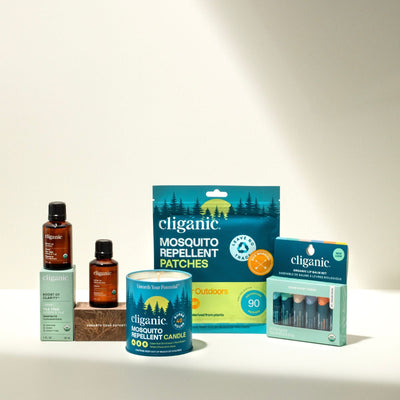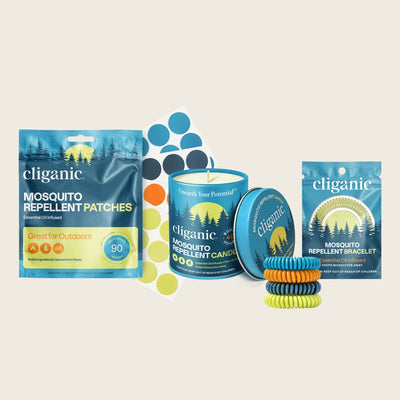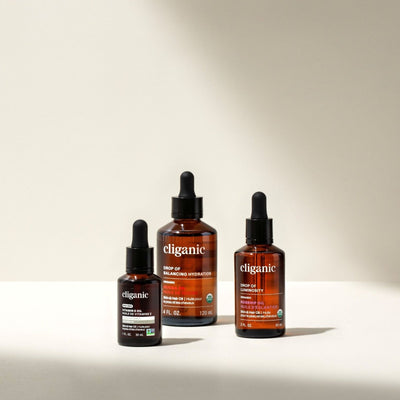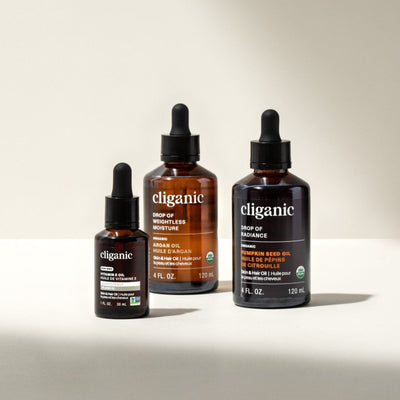
Baobab Oil - The Full Guide
It’s Uses and Benefits
Baobab oil, which comes from the seeds of the Baobab tree, is one of the most healing skin oils that we get from Africa. Due Africa’s mostly dry and arid climate, many plants that grow there offer ways to support our well being by providing us the needed essentials like water, shade and unique nutrients that protect and nourish.
Baobab’s history of use by the indigenous communities who have co-existed beside this amazingly large and unusually shaped tree has revealed how varied its therapeutic and healing properties can be.
Today you can often find Baobab Oil as an ingredient in many skincare products that promote dozens of different skin benefits including anti-aging, tissue repair and boosting the skin’s resiliency.
Let’s learn more about the amazing benefits of this special skin oil by better understanding where it comes from, what it’s made of, and all the different ways we can use it.
What is Organic Baobab Oil?
Baobab Seed Oil (Adansonia digitata) is cold expeller pressed from the seeds of the Baobab tree. The seeds are found encased in large melon shaped fruits that when cracked open reveal rows of large bean shaped seeds.
The seeds are then removed, cleaned, hulled and pressed for the oil which has a very balanced composition of many important essential fatty acids that have great benefits for our health, inside and out.
There are a few different species of the Baobab tree, but it’s the “digitata” species that gives us the beautiful light golden oil that we use on our skin. This particular tree can grow to be very large, and extremely old - up to 5000 years!
Plus, its shape is very unusual, some even refer to the tree as looking “upside down” because the trunk is often larger and thicker than the upper leaves and branches. The unusual thickness of the trunk is due to the tree’s amazing ability to store huge amounts of water. Some have calculated that the water content is upward of 30,000 gallons! No wonder this tree is often called, “Tree of Life” - as it provides hydration in a very dry and harsh climate.
Not only have these trees provided hydration in times of drought, but their fruit is powerfully nutritious, and when the trees age they hollow out, providing shelter for as many as seven people. Indigenous communities that have lived alongside these massive trees for generations have found great symbolic meaning from their presence in their lives.
How is the oil extracted?
Since the trees are so large, and revered, sustainable harvesting practices collect the fruits after they have matured and naturally fallen on the ground at the foot of the tree. Rural communities then hand gather these large capsule-like fruits and bring them to a processing facility that cracks open the hard outer shell, removes the rows of encased seeds and puts them in a tumbler that shakes off the coating. Next they are dried in the sun, and can be stored for many months.
To reap all the benefits from the remarkable composition of the seed’s essential fatty acids, the seeds are cold expeller pressed, making sure no heat is introduced during the pressing so that the oil’s benefits are preserved.
After pressing, the oil is filtered and bottled and ready for use. Many ask, does Baobab oil smell? Nope! Unlike other cold expeller pressed oils like Argan or Rose Hips, Baobab has no noticeable scent.
What makes Organic Baobab Oil so special?
The most unique part of Baobab oil is how all the different percentages of the essential fatty acids are perfectly balanced. This kind of ratio is unusual in plant oils, and it tells us that Baobab Oil is an incredibly balancing oil for our skin.
The oil is light feeling and absorbs quickly, and it is loaded with minerals and vitamins, including a carotenoid which is the precursor to vitamin A - a really important vitamin that contributes to skin cell regeneration,elasticity, tissue repair and resiliency. There is also a trace amount of vitamin D, which has been shown to support the skin’s immunity and appearance.
But the true magic of the oil lies in its unique composition of essential fatty acids, which support the skin barrier function, provide protection against environmental damage, boost our immunity and offer deep nourishment.
Essential fatty acids are fats that our body needs in order to survive. That’s why they are called “essential.” But the only way to get them is by eating certain meats, fish and vegetables that contain them and by applying these oils directly to our skin via skincare products. Our bodies do not naturally manufacture these fatty compounds, so we need to supply them to our bodies through outside sources.
Essential fatty acids are super important because they help our bodies manufacture the hormones that regulate all the functions of our physiology. Without them, our health can quickly deteriorate and fall into imbalance which can potentially cause all sorts of unpleasant health issues.
To avoid this, it’s important to eat a diet rich in essential fatty acids and use skin care products that are also loaded with these important fats. Baobab oil side effects? There are none!
Let’s look a little more closely at the essential fatty acids that are found in Baobab Oil.
Here are a few of the Essential Fatty Acids that we can find in Organic Baobab Oil, and how they benefit the skin:
Linoleic Acids (Omega-6) are known to:
- Moisturize hair and promote its health
- Facilitate wound healing
- Reduce swelling and inflammation
- Soothe away blemishes and reduce recurrences on acne prone skin.
- Moisturizing
- Softening
Oleic Acids (Omega-9) are known to:
- Keeps the skin soft, supple and glowing
- Supports healthy hair
- Promotes a youthful glow
- Fortifies our wellness
- Eases stiffness
PALMITIC ACID is known to:
- Softening
- Offer a light feel to skin and hair
STEARIC ACID is known to:
- Cleansing and clarifying
- Self stabilizing
- Protects and nourishes the skin and hair
- Softening
Now that you know a little more about what Organic Baobab Oil is and what it is made up of, here is a guide to show you how best to use it.
1. Baobab oil for skin: Supports Your Skin’s Resilience
Think of Organic Baobab Oil as a kind of special coating that both protects and nourishes the skin.. Since it absorbs so quickly and deeply, its amazing essential fatty acids go straight to work supporting our skin’s role in protecting us from environmental damage. Baobab oil for dry skin: It’s best used when your skin feels extremely dry, damaged and sensitive, and once applied, notice how quickly your skin feels healthier. Plus Baobab Oil is soothing to acne prone skin by reducing inflammation and promoting healing.
2. Baobab oil for face: Encourages Your Skin to Rejuvenate and Restore itself
Since Baobab also contains carotenoids, which are the precursors to vitamin A, it has this remarkable ability to support skin cell regeneration. This means the skin gets an extra boost of tissue reparative nutrients that can reduce inflammation, promote elasticity and help the skin look refreshed and rejuvenated.
3. Baobab oil for body: Offers Your Skin nourishing hydration for all skin types
The unique balance of Oleic acid and Linoleic acid found in Baobab oil, contributes to its powerful ability to quench severely dry and damaged skin. Think rough elbows and knees, dry cracked hands and feet. Baobab when applied directly to these troubled areas can offer immediate relief, while soothing and softening the skin.
4. Baobab oil for hair: Promotes stronger, shinier hair
Organic Baobab Oil can nourish the scalp and strengthen locks, making the hair feel and look healthy and thicker. Dry brittle hair drinks up the nourishing vitamins and minerals found in Baobab, leaving it feeling restored and rejuvenated. Baobab oil shampoo is another great way to feed the scalp and this nurturing plant oil, so that your hair feels softer and looks more luxurious.
5. Baobab Oil for acne: Promotes clear and healthy skin
One of the really special features of Organic Baobab Oil is for acne prone skin because it has this remarkable ability to fight off pathogens – for this reason it can be a great addition to skincare regimes in between breakouts. Try applying it to your trouble spots to help prevent potential breakouts.
























